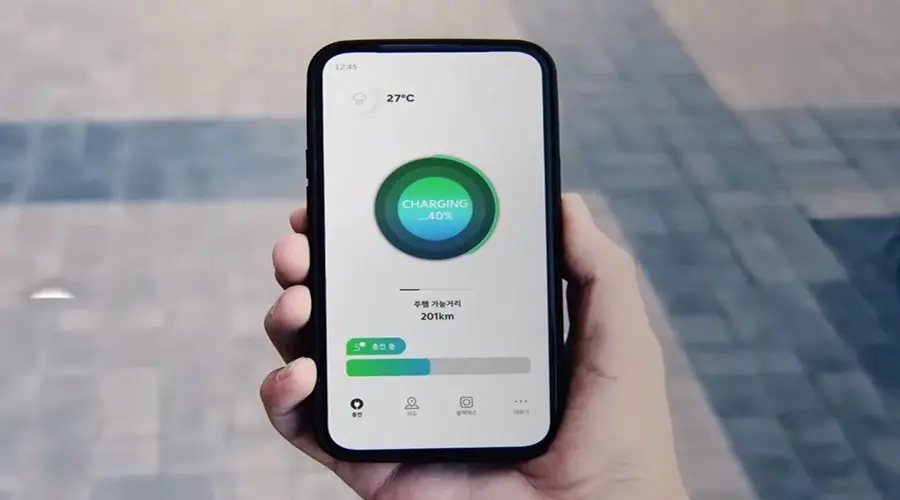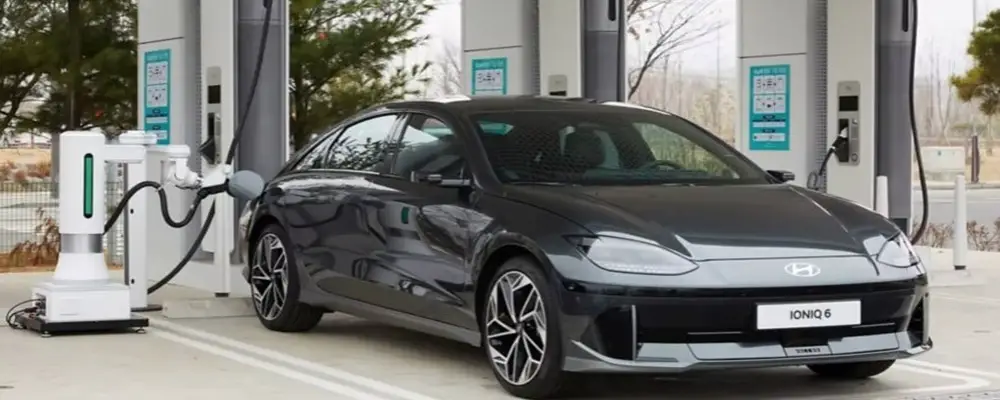What is Automatic Charging Robot (ACR) by Hyundai?
Hyundai Motor Corporation recently unveiled an automatic charging robot for electric vehicles. The ACR (Automatic Charging robot) is a robotic arm that automatically communicates with EV and opens the charging port. Then the arm automatically plugs into your EV. The technology sounds simple, but it’s a next-level resolution in EV charging Industry.

ACR Overview
The Automatic charging robot has a robotic hand that performs most functions by receiving orders from an AI Algorithm. The automatic charging robot can work in various environments, including dust and rain. It can also detect obstacles on its way and take necessary actions with complete safety.
Furthermore, The ACR correctly puts the charger in the vehicle charging port using a 3D camera and an AI algorithm. The Hyundai group has a strong belief in its use by Human beings. The robot will support humans in charging electric vehicles. It will be a blessing, particularly for the elderly and people with disabilities.
How does an automatic charging robot (ACR) work?
The ACR is a one-hand robot that can plug a charging cable into EV’s charging port and remove it again on its own when charging is complete. This autonomous nature of the charging robot makes it more usable and accessible.
First of all, let us understand how it works. The autonomous EV parks itself in a charging bay upon arrival. Once the vehicle gets in place, the ACR communicates with EV to open a charging port. It then calculates the charging port’s location and angle by the 3D camera mounted on ACR.
The robot then picks up the charger from the charging point and connects it to the charging port of the EV. Then it starts charging the vehicle. Once done, the ACR removes the charging cable and places it again in the correct place. Finally, it closes the charging port lid, and your EV is ready and fully charged.
The backend
The automatic charging robot appears surprisingly easy initially, but the underlying software and data processing is complex. Here, diverse variables are considered, such as weather, charging port design, obstacles in between, and the weight of the cable. The group’s robotic lab had enormous effort behind the scenes.
In addition, for the robot to work independently and keep the entire process aligned, the software needs to be robust, which can take into all the variables at play as the robot’s place is entirely public and not a controlled environment.
The next-generation AI with a 3D camera and control technology does wonders. Thanks to the new technology as it can handle heavy chargers brilliantly. The ACR has a waterproof and dustproof grade of IP65. The system’s performance is such that it can operate in extreme environments.
Additionally, the system detects obstacles by the laser sensor installed on the safety pole. It scans the surroundings and detects incoming obstacles, stationery, or moving.

Automatic charging robot (ACR) advantages
First of all, the ACR will make EV charging more simple. Its become more convenient to charge an EV than before. The robot also improves the accessibility of EV chargers.

The elderly and physically disabled people can use EV charging stations more conveniently. The robot will work flawlessly along with the autonomous parking feature. It can also improve utilization by consecutively charging parked vehicles.
In conclusion, Hyundai’s automatic charging robot (ACR) will significantly improve the convenience and accessibility of an EV charging station.
